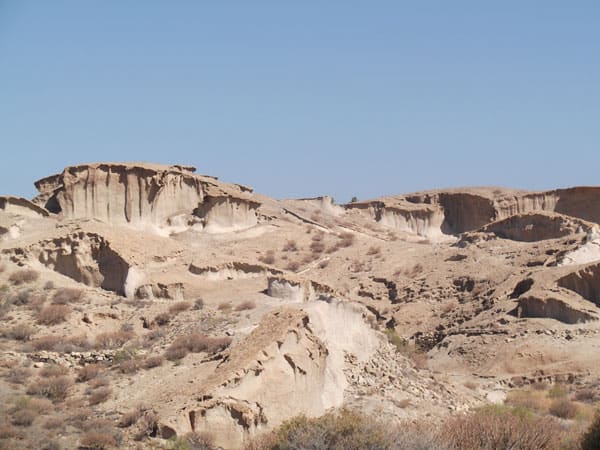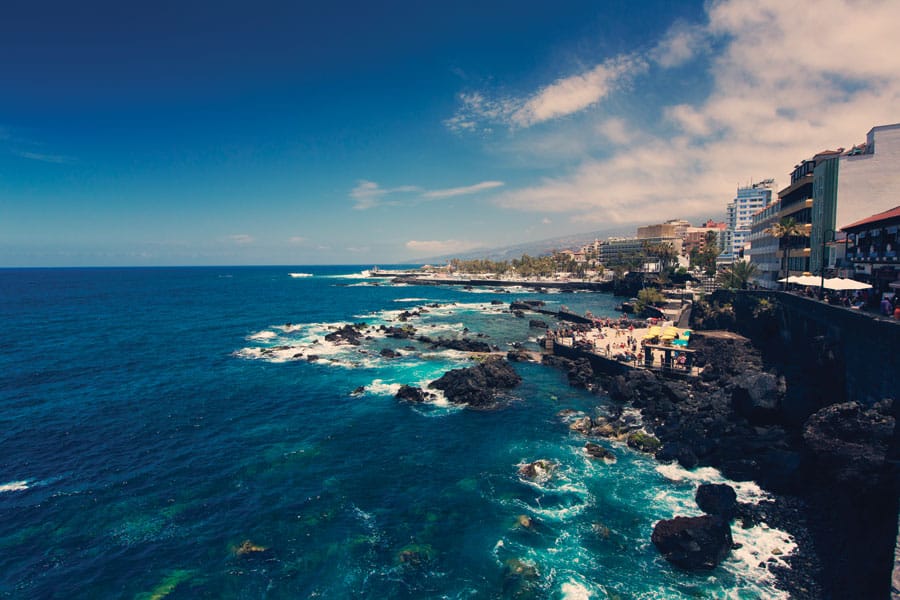Whether learning about the Canary Island’s first inhabitants or sipping on a cortado in a square in Peurto de la Cruz, Anne Whelton discovers the spice of life in Tenerife and an island rich in history and culture.
It is a truth universally acknowledged, that any vitamin D deficient Irish person in want of a bit of sunshine, should pack up and head to the subtropical Canary Islands for a few weeks.
And while we may have received our fair share of sunshine during the summer months of 2013 – which I’m sure will be fondly remembered for many years to come – as George RR Martin seems so intent on reminding is, winter is indeed coming, and with it – no doubt – rain, hail and our old friend snow.
Literary references aside, when the opportunity to spend a long weekend in Tenerife in June landed on my desk in late April – the coldest April in 24 years I might add – my glove-covered hands made the decision for me before my brain had even processed it.
With the May thaw came the skepticism. ‘Tenerife in June? Won’t the schools be out by then?’ one friend pointed out. ‘Isn’t Tenerife just for people on package holidays?’ another added. As a first-time visitor to Tenerife, and indeed the Canary Islands, I was slightly apprehensive. While I enjoy relaxing as much the next person, I have always been more of a culture vulture than a sun worshipper; more often than not, choosing city breaks and countryside road trips over poolside lounging.
Nevertheless, June arrived, and with my bags in tow I set off for Dublin Airport and my four and a half hour flight to Tenerife South Airport.
Less than an hour after touching down in Tenerife, while enjoying a glass of wine on my private balcony overlooking the sea at the five-star Hotel Iberostar Anthelia on the Costa Adeje, I was reformed, and had already begun selecting my sun-lounger for the next day.
At one with nature

The San Blas Ravine
Fortunately – or unfortunately for me, now a fully-fledged holiday lay-about – any initial concerns about a lack of culture, were just that, and were soothed bright and early on the first day of our busy itinerary of events with a trip to the Sandos San Blas Environmental Reserve. Situated in the south of the island, not far from the airport, developers at the Sandos San Blas resort had originally intended on building a golf course on this barren landscape. However, after excavation work uncovered caves and evidence of the Guanches – the first inhabitants of the Canary Islands – San Blas was developed into a hotel and nature reserve instead.
An hour long walking tour of the San Blas Ravine and the interactive museum, offered us an insight into how the island of Tenerife was formed over 12 million years ago and how the Guanches, who lived on the island over 2,000 years ago, survived in this harsh landscape until they were wiped out by the Spanish invasion in the 15th century.
San Blas also offered food for thought for what was next on our whistle-stop tour of Tenerife: Europe’s largest water park.
The water kingdom
A 15-minute drive from San Blas is Siam Park in Costa Adeje, aptly named ‘the water kingdom’. A water baby’s paradise, here, if you can imagine it, you can do it. Have you ever wanted to free fall 28 metres down an almost vertical descent into an aquarium full of sharks? If the answer is yes then Siam Park is for you. However, even the most adventurous water baby will need to join a long queue, so a Siam Park fast pass, which is included with the all inclusive wristband, is definitely worth the extra money.
With rides galore to keep the thrill-seekers busy, there’s also plenty on offer at Siam Park for anyone hoping for some quiet time. We were lucky enough to have a VIP cabana for the duration of our stay which offered views of the park’s beach, private sun-loungers, showers and towels, a TV and minibar as well as inclusive fast passes for all the rides.
The floating market at the entrance to the park is also worth pausing over. The market, which is surrounded by water gardens and hundreds of fish follows the traditional Thai-style of architecture and is the largest Thai village outside of Asia.
The beach at Siam Park
Siam Park’s sister attraction in the north of the island, not far from the capital, Puerto de la Cruz, is Loro Parque. Also taking its design inspiration from Thailand, Loro Parque has welcomed almost 40 million visitors since it opened in 1972 and has the largest collection of parrots in the world – over 4,000 to be exact – as well as the world’s largest indoor penguin exhibition, Europe’s largest dolphin show pool and longest shark tunnel and numerous animal shows to keep children entertained.
Walking with giants
Staying with the water theme, day two of our trip involved a two-hour dolphin and whale watching trip aboard the Gladiator under the imposing majesty of the Los Gigantes cliffs. We were lucky enough to happen upon a family of pilot whales, complete with a two-week old calf, who seemed only too happy to say hello and pose for photographs for a boat full of wayward Irish journalists.
Whale watching at Los Gigantes
The cliffs at Los Gigantes or ‘The Giants’ in English, are a must-see for all visitors to Tenerife. Rising over 600 metres from the sea, the rugged beauty of the cliffs combined with the picturesque seaside town living in their shadow is a million miles away from the hustle and bustle of the resorts in Playa de las Americas and Los Cristianos and, for me, was where this volcanic island really came into its own.
Local fiestas
Our final day in Tenerife was spent soaking up the atmosphere in Puerto de la Cruz. Situated in the north of the island, where the Orotava Valley meets the Atlantic Ocean, Puerto de la Cruz offers visitors a slightly milder climate and a greener landscape than the south of the island, with the average year-round temperature of 20 degrees, compared to the mid 20s in the southern resorts.
However, Puerto de la Cruz is not without it’s beaches, and visitors and locals alike can be seen soaking up the sun on one of the city’s many black sand beaches, synonymous with the region, and at the Martiánez sea bathing lake complex, designed by Canarian artist César Manrique, whose deft handiwork can be seen throughout the landscape and architecture of the Canary Islands.
A short walk down one of the city’s many charming streets can throw up all manner of surprises, from the Plaza del Charco, in the town centre to Castillo San Felipe, a small stone castle located near Playa Jardín.
We were lucky enough to visit during the celebration for Día de San Juan (St John’s Day), when locals hold fiestas in the fishing docks of the city, swim in the harbour and gather to witness the famous ‘baño de las cabras’ (goat dip) which is held on the day of San Juan every year, in memory of an aboriginal fiesta held by the Guanches to celebrate the summer solstice.
Canarian cuisine
The traditional Canarian dish papas arrugadas.
Of course the perfect accompaniment to a busy day of sightseeing is good food and wine, and Tenerife has both in abundance. Tenerifians, and indeed Canarians, are particularly proud of their gastronomical offering, and rightly so. Today, Canarian cuisine reflects the country’s historical influences. Gofio, a Canarian flour made from roasted grains, was a main staple in the diet of the Guanches and is still used today.
Other popular dishes include papas arrugadas or Canarian wrinkled potatoes cooked in sea salt – which have been eaten on the island since the 1600s – and mojo, a sauce which often accompanies papas arrugadas and fish dishes, is a must-try for any visitor to the Canaries.
While on the island, we sampled some delectable local produce at Masía del Mar, a family-run seafood restaurant overlooking the ocean, where garlic soaked prawns and cherne, a local fish, were washed down with glasses of Cava, local Canarian wines and cortados – an expresso coffee ‘cut’ with warm milk – which we grew extremely fond of during our trip.
Variety is certainly the spice of life in Tenerife and whether you want to hike to the highest point in Spain, the peak of Mount Teide – which coincidentally is still an active volcano – or enjoy a relaxing day at the Abama Spa Resort, Tenerife has something for everyone and is nothing if not richly cultured.
I never did get the chance to enjoy that poolside sun-lounger in the end.
Out and about
Getting there:
Aer Lingus operates flights from Dublin and Cork to Tenerife’s Reina Sofia, in the south of the island. For more details and to make a booking, log on to www.aerlingus.com
Getting around:
The easiest way to see all that Tenerife has to offer is by car. While there is a bus network (www.titsa.com) on the island, to make the most of your time – particularly if you are traveling with children – pay a visit to one of the many car-rental agencies at the airport.
Staying there:
Tenerife has a wealth of accommodation options for any budget. We stayed at the sprawling five-star Hotel Iberostar Anthelia (www.iberostar.com/en/hotels/tenerife/iberostar-anthelia) on the Costa Adeje for the duration of our trip, which offers everything from a spa and kids’ club to a cinema and five restaurants. Rooms at the Hotel Iberostar Anthelia start at €118 p.n.
The five-star Abama Golf & Spa Resort (www.abamahotelresort.com), located on a 160-hectare private estate offers the perfect getaway for couples or those looking for a bit of peace. Frequently voted one of Spain’s top resorts and with an award-winning golf course, the Abama boasts 469 rooms and suites, 10 restaurants – two of which have been awarded Michelin stars – and a private beach. Rooms at the Abama Golf & Spa Resort start at €200 p.n.
For some old world charm, you won’t do much better than Hotel Monopol (www.monopoltf.com). This quaint three-star in the heart of Puerto de la Cruz has been managed by the same family for over 75 years and is popular with national and international visitors alike. Double rooms at the Hotel Monopol start at as little as €34 p.n.
Eating out:
Tenerife offers plenty of variety when it comes to dining out. From seafood at Masía del Mar, in the heart of old Tenerife to cocktails at the Papagayo Beach Club in the bustling resort of Playa de Las Americas. However, the best way to experience Canarian food is to sample tapas in the many restaurants dotted around the island.
For more information on Tenerife log on to www.webtenerife.com

